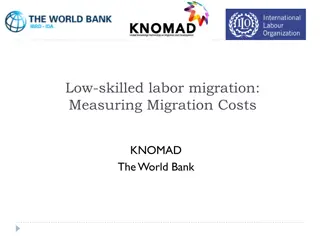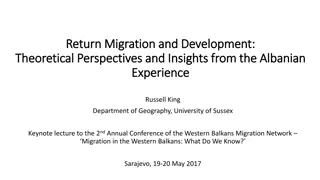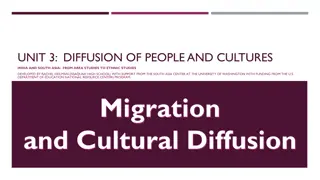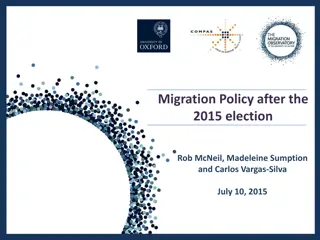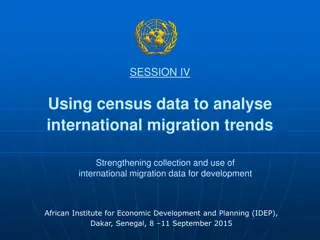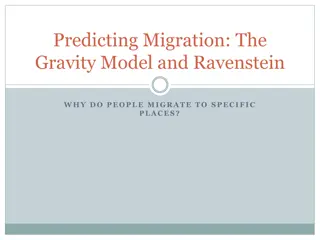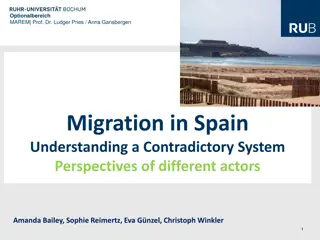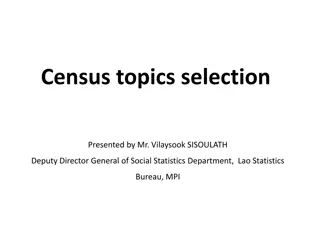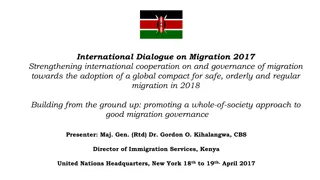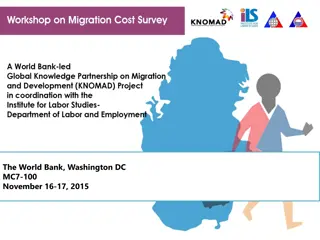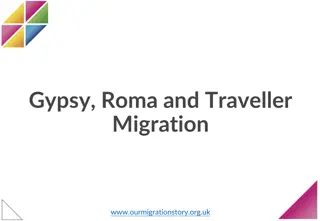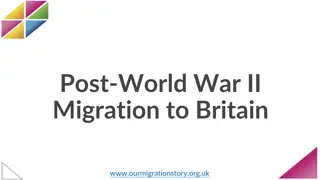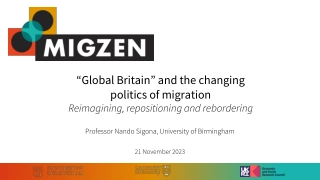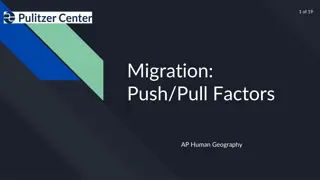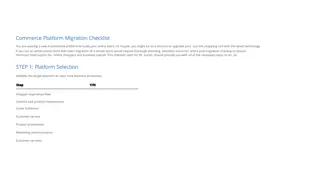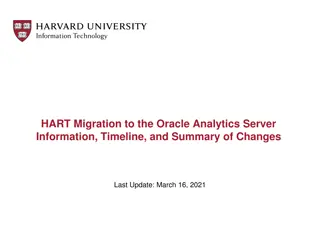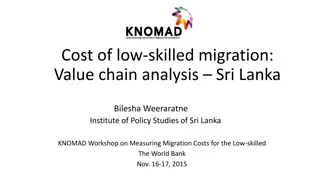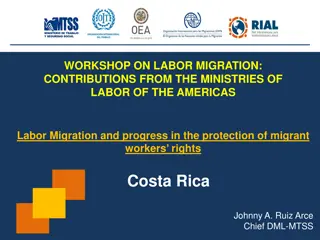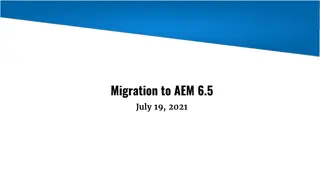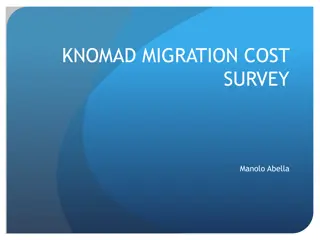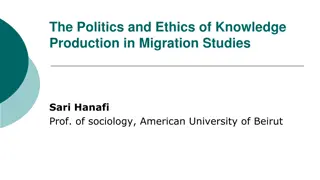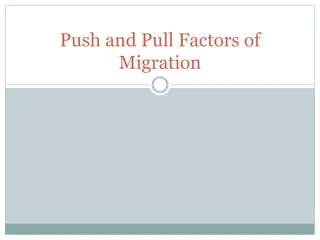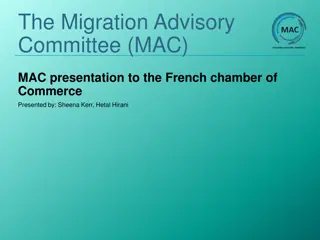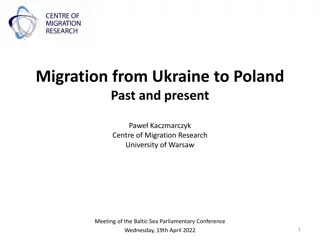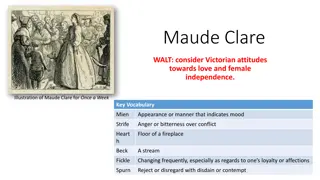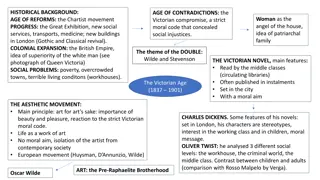Migration Trends in Victorian Britain
Overseas migration to Victorian Britain was relatively low in the 19th and early 20th centuries, with Irish, German, and Italian migrants being prominent. The Irish migration was driven by famine, with many settling in areas like Liverpool for work. German migrants contributed to various professions, while Italian migration saw significant growth in the late 19th century, particularly in London.
Download Presentation

Please find below an Image/Link to download the presentation.
The content on the website is provided AS IS for your information and personal use only. It may not be sold, licensed, or shared on other websites without obtaining consent from the author. Download presentation by click this link. If you encounter any issues during the download, it is possible that the publisher has removed the file from their server.
E N D
Presentation Transcript
The number of overseas migrants living in Britain was relatively low in the 19th and early 20th century. Between 1851 and 1911, census data shows that less than 5% of the English population was born overseas. Compare to the 2021 census, which showed that over 16% of the people living in England and Wales had been born overseas.
Irish migration The 1861 census recorded around 805,000 Irish migrants living in mainland Britain (more than twice that number if we count the children of Irish migrants). A vast majority of these had been driven by hunger. In 1845, the Irish potato crop was destroyed by blight. Between 1846 and 1851, it is estimated that one million Irish people died of starvation. Furthermore, Irish landowners took the opportunity to evict small tenant farmers from their land. In one area of Ireland alone, 4,000 were evicted in a few months.
Irish migration The majority of Irish immigrants came to work in factories in the north-west of England, especially Liverpool, which was easily reached by boat from Dublin and Belfast. Another common employment for Irish men was to work as navvies , digging the earth to build canals, roads, railways and docks. Many families arrived in a poor state - hungry, weak and sick - and found themselves living in overcrowded, unhealthy conditions.
German Migrants The census of 1861 showed that there were 28,644 German-born people living in Britain. This number almost doubled to 53,324 by 1911. The actual size of the German community in Britain would have been greater, as the census does not count Germans who had become naturalised British citizens or the children of immigrants. Image source: The German Community in London during the 19th century | The History of London
German migrants "Germany supplies us with a large number of musicians, teachers of the German language, servants, merchants, factors, and commercial clerks, watch and clock makers, engine and machine makers, tailors, shoemakers; with many bakers, and a large colony of sugar refiners." General Report of the 1861 Census
Italian Migrants From the 1880s, the Italian community in Britain grew rapidly. Between 1891 and 1901 the number of Italian-born people living in Britain more than doubled, rising from 11,000 to over 24,000. Over half of these were living in London. Note: British census figures do not include those born in Britain to Italian parents: the actual size of the Italian community would therefore have been greater.
Italian migrants from Southern Italy moved to cities like Manchester, Glasgow and London. Many worked in factories. Others worked as street musicians, statue makers, singers, waiters, and food sellers (eg ice cream)...
Jewish Migrants After 1880, large numbers of Jewish immigrants arrived in Britain. They were fleeing anti-Semitism, economic changes, and political repression in Russia and Eastern Europe. Between 120,000 and 150,000 Jewish immigrants settled in Britain in the period leading up to the First World War. Many of these Jewish immigrants settled in areas such as east London and Manchester.
Jewish Migrants in Manchester In the late 1800s and early 1900s, around 30,000 Jewish migrants from Russia and Eastern Europe settled in Manchester. These migrants were being drawn by the north of England s booming economy, with places like Manchester at the centre of Britain s Industrial Revolution.
Jewish Migrants in London During the 1880s and 1890s, tens of thousands of Jewish migrants from Eastern Europe settled in Spitalfields, east London.
Primary Source My first impression on going among them, was that I must be in some far-off country whose people and language I knew not. The names over the shops were foreign, the wares were advertised in an unknown tongue, of which I did not even know the letters, the people in the streets were not of our type, and when I addressed them in English the majority of them shook their heads. Mrs Brewer (a middle-class English woman) describing a visit to Spitalfields. Sunday Magazine 1892.
People began to be concerned by the supposed economic effects of continued immigration, especially of poor immigrants from eastern Europe. In 1905, the Aliens Act was passed, which placed restrictions on immigration for the first time in Britain. This Act was passed partly as a result of lobbying and growing anti-Semitism against Jewish immigrants.


